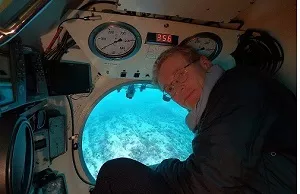
Arctic Seafloor Algae Helping to Reveal Historic Sea Ice Conditions
Arctic sea ice is currently declining at an alarming rate. Yet, owing to a lack of observations, we know very little about the long-term evolution of sea-ice prior to the 1970s. Jochen Halfar's research is therefore concerned with finding pink crusts of calcified algae on the Arctic sea floor that his group uses as archives of past sea ice cover. The algae lay down yearly growth bands - similar to tree rings on land - and according to the duration of sea ice cover each year, the thickness of growth bands fluctuate year by year. Since the algal crusts can live for many centuries, Halfar's group can reconstruct sea ice cover in the distant past. Currently Halfar is joining a team of 20 scientist onboard the German research vessel Maria S. Merian on a three week expedition to the high Arctic, where Halfar uses a manned submersible to locate and remove algal crusts from the seafloor near Spitsbergen at 80° northern latitude. A typical submersible dive last three hours. Meanwhile the pilot and scientist are confined to a very small space in the unheated underwater vehicle that is immersed in the frigid Arctic waters. The algae that Halfar has so far discovered on this ongoing expedition had previously never been found that far north. Back in the lab, the algae will be analyzed with microscopes and chemical techniques, so they can reveal data on historic ocean conditions from a remote region that is currently experiencing some of the most dramatic changes in climate globally.
